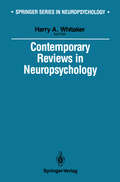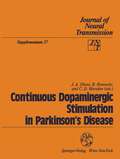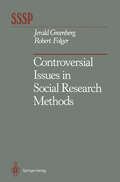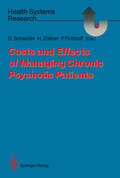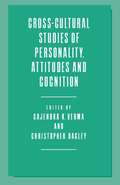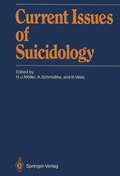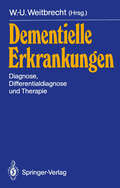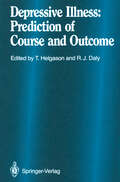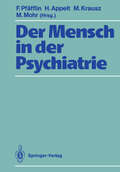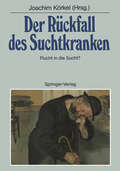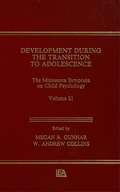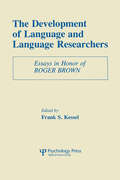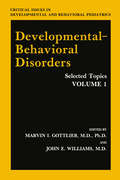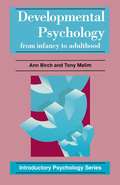- Table View
- List View
Constructivism in the Computer Age (Jean Piaget Symposia Series)
by George Forman Peter B. PufallDiscussing the future value of computers as tools for cognitive development, the volume reviews past literature and presents new data from a Piagetian perspective. Constructivism in the Computer Age includes such topics as: teaching LOGO to children; the computers effects on social development; computer graphics as a new language; and computers as a means of enhancing reflective thinking.
Constructivism in the Computer Age (Jean Piaget Symposia Series)
by George Forman and Peter B. PufallDiscussing the future value of computers as tools for cognitive development, the volume reviews past literature and presents new data from a Piagetian perspective. Constructivism in the Computer Age includes such topics as: teaching LOGO to children; the computers effects on social development; computer graphics as a new language; and computers as a means of enhancing reflective thinking.
Contemporary Reviews in Neuropsychology (Springer Series in Neuropsychology)
by Harry A. WhitakerContemporary Reviews in Neuropsychology arrays the most current research on hemispheric specialization of the brain. Special attention is given to the functioning of the right hemisphere in the processing of spatial and sequential information. Among the topics discussed are the nature of hemisphere asymmetries, lexical processing, spatial memory, and humor and the right hemisphere.
Continuous Dopaminergic Stimulation in Parkinson’s Disease: Proceedings of the Workshop in Alicante, Spain, September 22–24, 1986 (Journal of Neural Transmission. Supplementa #27)
by C. D. Marsden R. Horowski J. A. ObesoAt this meeting, a number of critical groups confirmed and extended the original findings by J.A. Obeso and his colleagues. These authors found that continuous s.c. infusion of lisuride, a watersoluble dopaminergic 8- -aminoergoline with dopaminergic properties which can be injected or infused, can improve - sometimes quite considerably - motor function in severely disabled fluctuating Parkinsonian patients. The concurrent use of the peripheral dopamine antagonist domperidone attenuates or prevents side effects related to the stimulation of "peripheral" dopamine receptors, including the chemoreceptor trigger zone and some areas of the hypothalamus outside the blood-brain barrier. The clinical results discussed in this volume may not only be a basis for further improvements in our knowledge and therapeutic strategies in Parkinsonism, they point to the so far neglected importance of different ways of stimulating neurological or other systems, e.g. discontinous, oscillatory effects caused by frequent oral application vs. continuous stimulation as described here with the lisuride s.c. infusion. Similar concepts have to be discussed and investigated in neurological disorders. In this respect, this multidisciplinary meeting and its publication may offer new ideas and concepts for therapy in general, in addition to its potential application in the treatment of the complications of Parkinson's disease.
Controversial Issues in Social Research Methods (Springer Series in Social Psychology)
by Jerald Greenberg Robert FolgerIt is often said that one of the key determinants of a book's wmth is the extent to which it fulfills the reader's expectations. As such, we welcome this oppor tunity to help formulate the expectations of our readers, to express our view of what this book is and what it is not. We believe that fully appreciating this volume requires understanding its mission and how it differs from that of other books on research methodology. We have not prepared a primer on research techniques. We offer no "how to" guides for researchers-nothing on how to conduct interviews, how to design studies, or how to analyze data. We also have not prepared a partisan platform documenting "our way" of thinking about research. Very few, if any, attempts at proselytizing may be found in these pages. What we have done, we believe, is to bring together a number of recurring controversial issues about social psychological research-issues that have divided profes sionals, puzzled students, and filled the pages of our journals. Few scholars have missed reports arguing the sides of various methodological contro versies, such as those surrounding the merits or shortcomings of field research in comparison to laboratory research, the use of role playing as an alternative for studies involving deception, or the value of informed consent procedures, to name only a few examples. Our aim in preparing this volume has been to organize and summarize the salient aspects of these and other impmtant controversial issues.
Coping, Behavior, and Adaptation in Prison Inmates (Research in Criminology)
by Edward Zamble Frank J. PorporinoThis book is the report of a collaborative effort. Frank Porporino and I arrived at the starting point for our work together by very different routes. Originally trained as an experimental psychologist, I had become in creasingly restive within the confines of the laboratory, and spent a sab batical year in the equivalent of a clinical internship. I then spent some time as a part-time consultant in a local penitentiary. Most of my time in the institution was spent with inmates with a variety of problems, probably about 50 individuals over the course of a year. Although this was far fewer than a full-time psychologist in the system might encounter, it served as a quick cram course on problem prisoners and prisoner problems. Very quickly my stereotypes about convicts were shown to be virtually useless. I learned that the criminal classes included all levels of society, and that the behavior of prisoners was the same as that of other human beings in a difficult environment.
Costs and Effects of Managing Chronic Psychotic Patients (Health Systems Research)
by Professor Dr. Detlef SchwefelCritical Essays on Language Use and Psychology
by Daniel C. O’ConnellRagnar Rommetveit University of Oslo Let me start this introduction to Professor O'Connell's Critical essays on language use and psychology with some reflections on psychologists and crabs. It so happens that the first professor of psychology in Norway had the middle name Krabbe ("Crab") His full name was Harald Krabbe Schjelderup. Hence, the crab became our symbol for the psychologist. For many years a "crab feast" was held every autumn in Oslo in order to celebrate the material union of crabs and psychologists and ponder (symbolically and metaphorically) their shared fate. A comparison between the predicament of the crab and that of the modern psychologist may indeed be illuminating, once we make certain assumptions about their unique epistemic missions and systematically explore the severe constraints on their heroic search for knowledge. The crab is ordained to unravel the mysteries of the ocean, yet doomed to crawl sidewise on the is most of the time mollusks and bottom. His catch, alas, cadavers of sea creatures, and he cannot help envying the fish swimming freely above him. The psychologist's mission is to unravel the mysteries of His obligation to seek insight into essential the human soul.
Critical Psychophysical Passages in the Life of a Woman: A Psychodynamic Perspective
by Joan Offerman-ZuckerbergAfter the birth of my second son some 11 years ago, I was painfully torn by the timing of my reentry to work-my wish to return to a prestigious and stimulating position as chief psychologist of a large agency, or my equally powerful wish to enjoy fully my beautiful new son's infancy, undivided and untorn. At the time I had a dream that my body was cut in half at the waist-my head leaned to the books neatly contained on the library shelves; my belly went to the crib, all sweet-smelling and soft. Not having had the opportunity to be "un divided" with my first son (now 17 years old), I chose to resign my agency position and stay home as long as I wished and then develop my private practice. It was a decision that at the time entailed much loss-cerebral, collegial, social, pres tigious-and generated some self-doubt, but in retrospect it is not regretted and was perhaps wise. This son's infancy will always be remembered as a time in which I experienced mothering with ease and grace.
Cross-Cultural Studies of Personality, Attitudes and Cognition
by Christopher Bagley Gajendra K. VermaA collection of essays pioneering new concepts in cross-cultural psychology based on the work of Philip E.Vernon, a pioneer of rigorous theory building and careful methodology. It includes empirical studies on aboriginals in Canada and infants in Japan, India, Jamaica and Britain.
Current Issues of Suicidology
by RainerWelz ArminSchmidtke Hans-JürgenMöllerContributions from the First European Symposium on Empirical Research into Suicidal Behavior, Held March 19-22, 1986 in Munich. Initiated by Arbeitsgemeinschaft zur Erforschung Suizidalen Verhaltens with Deutsche Gesellschaft fürSelbstmordverhütung
Das psychiatrische Krankenhaus: Therapeutischer Prozeß — Kontext und Werte
by Henry L. Lennard Alexander GralnickDie Autoren beschreiben in diesem Buch die wesentlichen Merkmale eines therapeutischen Sozialsystems. Dabei zeigen sie, wie charakteristische Kontextmerkmale eine Behandlung zu Veränderungen von Symptomen, Verhaltensformen und Werthaltungen schizophrener Patienten führen. Innovative Formen der therapeutischen Arbeit vermitteln dem Patienten die Fähigkeit zu vertrauen, soziale Kompetenzen zu erwerben, sich anderen aktiv zuzuwenden sowie sich Informationen zu beschaffen und sich ihrer zu bedienen. Die Architektin Suzanne Crowhurst Lennard entwickelt in einem besonderen Kapitel Richtlinien für die Analyse und Planung einer räumlichen Umgebung des Patienten, die einer besseren Nutzung der therapeutischen Möglichkeiten entspricht. Dargestellt werden insbesondere die Bedeutung individueller Territorien und ästhetischer Qualitäten des Raums. Es wird gezeigt, wie Wertprioritäten, Wertkonflikte und Wertwandel Verständnis, Betreuung und Behandlung schizophrener Menschen zentral beeinflussen. Schließlich legen die Autoren eine Theorie der therapeutischen Veränderung vor, für welche der Begriff der therapeutischen Dosierung um Gregory Bateson's Begriff des "Lernens zu lernen" grundlegend ist.
Death And Grief: A Guide For Clergy
by Alan D. WolfeltFirst Published in 1988. Routledge is an imprint of Taylor & Francis, an informa company.
Death And Grief: A Guide For Clergy
by Alan D. WolfeltFirst Published in 1988. Routledge is an imprint of Taylor & Francis, an informa company.
Dementielle Erkrankungen: Diagnose, Differentialdiagnose und Therapie
by W. U. WeitbrechtDas Buch beschreibt die Diagnose, Differentialdiagnose und Therapie der "klassischen" Demenzformen (Demenz vom Alzheimertyp, senile Demenz, vaskuläre Demenz). Der Schwerpunkt liegt auf der Differentialdiagnose dementieller Prozesse, die von der AIDS-Enzephalitis über endokrine Störungen bis zur Herzinsuffizienz reicht. Hierzu wird auf die pathologische Anatomie, Epidemiologie, klinische Psychopathologie eingegangen und gleichzeitig wird auf die Wertigkeit der apparativen Diagnostik von EEG und evozierten Potentialen (MRI, CT, PET) hingewiesen. Neben der internistischen und neurologischen Differentialdiagnose wird besonders auf neurochirurgische Krankheitsbilder (chronisches subdurales Hämatom, "normal-pressure"-Hydrozephalus) eingegangen. Neben der derzeit möglichen Pharmakotherapie der "klassischen" dementiellen Prozesse wird auch auf sozialpsychiatrische Hilfestellungen hingewiesen. In knapper und übersichtlicher Form erhält der Arzt eine ausgezeichnete Informationsquelle zu einem aktuellen Thema.
Depressive Illness: Prediction of Course and Outcome
by E. E. Anttinen H. Hippius R. Sadoun E. A. SandThe group of European Medical Research Councils (EMRC) was formed in 1971 and became a Standing Committee of the European Science Foundation (ESF) in 1975. EMRC is an association of medical research councils or equivalent organizations in Western Europe. The National Institutes of Health, the Israel Academy of Sciences and the European Office of WHO are associated with EMRC and take an active part in EMRC activities. The main aims of EMRC are to exchange information on the research policies pursued by its member organizations and to initiate and stimulate international cooperation in biomedical research. Since biomedical research is highly international in itself, EMRC concentrates its activities on furthering international collaboration in those fields where it can play a significant role as a complement to existing channels. Mental illness research has been judged by EMRC to fulfill these criteria. After a survey of the activities of the member organizations in mental illness research, EMRC decided in 1978 to set up a study group to look for areas within this field to which EMRC could contribute. As a result of the work of the study group, four work shops have been arranged to define present knowledge in some specific areas and to delineate research needs. The present volume contains the proceedings of the fourth workshop, held in 1985 and dealing with the course and outcome of depressive illness. EMRC hopes that this volume will stimulate intensified research and research cooperation on mental illnesses.
Der Mensch in der Psychiatrie: Für Jan Gross
by Friedemann Pfäfflin Hertha Appelt Michael Krausz Michael MohrIn 33 Einzelbeiträgen behandeln führende Wissenschaftler aus der Psychiatrie des In- und Auslandes zentrale Fragestellungen der Psychiatrie: - Das Menschenbild in der Psychiatrie, Möglichkeiten und Grenzen psychiatrischen Denkens und Handelns, Fragen des Krankheitsbegriffs, Sexualität und psychische Erkrankung, Psychotherapie und Zeitgeist, anthropologische Aspekte psychiatrischer Alterserkrankungen - Extremsituationen, Psychiatrie der Verfolgten, KZ-Haft und psychische Traumatisierung, sowie völlig neue Ergebnisse über die Rolle der Universitätspsychiatrie Hamburgs im Kontext der NS-Psychiatrie - zur Psychiatriereform, den Grundrechten in der Psychiatrie, dem Konzept "sexueller Gesundheit" der WHO - zur Erforschung der therapeutischen Beziehung in der Psychiatrie, zu Übertragung und Gegenübertragung und zu deren Einfluß und Auswirkung auf Theoriebildung einzelner Krankheitsbilder und Behandlungsergebnisse.
Der Rückfall des Suchtkranken: Flucht in die Sucht?
by Joachim KörkelDie Rückfallproblematik ist nach wie vor ein brandaktuelles Thema, das hier in einer Form aufgegriffen wird, die eine offene und sachgerechte Auseinandersetzung ermöglicht. Das Buch, das mit traditionellen Vorstellungen gründlich aufräumt, findet große Akzeptanz bei den Lesern. Aus den Rezensionen: "... Dieses Buch, das, in seiner Form bisher einzigartig, sich mit dem heißen Thema `Rückfall' ausführlich, offen und interessant auseinandersetzt, kann ich jedem, der sich mit dem Suchtproblem beschäftigt, nachdrücklich empfehlen. Besonders erfreulich ist der Mut der Autoren, alte Mythen, die trotz ihrer Fragwürdigkeit und Fehlerhaftigkeit noch immer rigide verteidigt werden, in Frage zu stellen bzw. deren Unbrauchbarkeit nachzuweisen. Dem süchtigen `Alles-oder nichts-Muster' wird positiv eine Alternative der `Vielfalt' gegenübergestellt. Der Stand der wissenschaftlichen Erkenntnis zum Gegenstand `Rückfall' wird dargestellt ohne den Leser zu erschlagen, da die Praktiker, die an diesem Buch mitgearbeitet haben, es mit lebendigen Beispielen füllen konnten. Es ist ein hilfreiches Werkzeug, da es mit seinen unterschiedlichen Sichtweisen neue Ideen in oft erstarrte Hilfsprozesse einführt..." #Suchtgefahren#
Development During the Transition to Adolescence: The Minnesota Symposia on Child Psychology, Volume 21 (Minnesota Symposia on Child Psychology Series)
by Megan R. Gunnar and W. Andrew CollinsResearch on the processes of change during the transition from middle childhood to adolescence has been a relatively neglected area of scholarship until recently. This volume, features prominent researchers who provide integrative accounts of their research programs, focusing on processes of physical, social, and cognitive change during this important transition period in development. Also included in this volume is an overview, discussion, and critical analysis of core conceptual issues in the study of adolescent transition.
Development During the Transition to Adolescence: The Minnesota Symposia on Child Psychology, Volume 21 (Minnesota Symposia on Child Psychology Series)
by Megan R. Gunnar W. Andrew CollinsResearch on the processes of change during the transition from middle childhood to adolescence has been a relatively neglected area of scholarship until recently. This volume, features prominent researchers who provide integrative accounts of their research programs, focusing on processes of physical, social, and cognitive change during this important transition period in development. Also included in this volume is an overview, discussion, and critical analysis of core conceptual issues in the study of adolescent transition.
The Development of Language and Language Researchers: Essays in Honor of Roger Brown
by Frank S. KesselFirst published in 1988. Routledge is an imprint of Taylor & Francis, an informa company.
The Development of Language and Language Researchers: Essays in Honor of Roger Brown
by Frank S. KesselFirst published in 1988. Routledge is an imprint of Taylor & Francis, an informa company.
Developmental-Behavioral Disorders: Selected Topics Volume 1 (Critical Issues in Developmental and Behavioral Pediatrics)
by John E. Williams Marvin I. Gottlieb"Child development" has always been a traditional component of well child care and a particular area of interest for pediatricians, child neu rologists, and psychologists. However, it was not until the early 1960s that children with developmental disabilities (i. e. , chronic handicapping disorders) became a major focus of public and professional attention. During this period, children with "special needs" were dramatically catapulted into the limelight and "exceptional" became the buzzword of the day. Public and professional awareness of these issues reached new peaks and recognition of the potential psychosocial impairments of chil dren with developmental disabilities created national anxiety. A variety of factors contributed to an unprecedented societal advocacy for chil dren with developmental problems: (1) a national concern generated by President Kennedy'S particular interest in mental retardation; (2) in creased activity and visibility of parent advocacy/lobbying groups (e. g. , the Association for Children with Learning Disabilities); (3) the enact ment of federal legislation designed to protect the rights of the handi capped (e. g. , PL94-142); and (4) the popularization of developmental behavioral disabilities by the various communications media. Cumulatively these events precipitated a redefinition of the real mean ing of "comprehensive health care for children," resulting in an empha sis on the child's neurodevelopmental, educational, psychological, and social needs. For the pediatrician, a myriad of new management respon sibilities were mandated, in addition to the traditional health care con cerns.
Developmental Psychobiology and Behavioral Ecology (Handbooks of Behavioral Neurobiology #9)
by Elliott M. BlassThe previous volume in this series (Blass, 1986) focused on the interface between developmental psychobiology and developmental neurobiology. The volume emphasized that an understanding of central nervous system development and function can be obtained only with reference to the behaviors that it manages, and it emphasized how those behaviors, in tum, shape central development. The present volume explores another natural interface of developmental psy chobiology; behavioral ecology. It documents the progress made by developmental psychobiologists since the mid-1970s in identifying capacities of learning and con ditioning in birds and mammals during the very moments following birth-indeed, during the antenatal period. These breakthroughs in a field that had previously lain dormant reflect the need to "meet the infant where it is" in order for behavior to emerge. Accordingly, studies have been conducted at nest temperature; infants have been rewarded by opportunities to huddle, suckle, or obtain milk, behaviors that are normally engaged in the nest. In addition, there was rejection of the exces sive deprivation, extreme handling, and traumatic manipulation studies of the 1950s and 1960s that yielded information on how animals could respond to trauma but did not reveal mechanisms of normal development. In their place has arisen a series of analyses of how naturally occurring stimuli and situations gain control over behavior and how specifiable experiences impose limitations on subsequent development. Constraints were identified on the range of interactions that remained available to developing animals as a result of particular events.
Developmental Psychology: From Infancy to Adulthood (Introductory Psychology Series)
by Ann Birch Tony MalimDevelopmental Psychology: from infancy to adulthood includes up-to-date coverage of attachment, play, cognitive development, social and moral development, self and self-esteem, gender, achievement, children's friendships, adolescence, young middle and late adulthood and research methods in developmental psychology.

